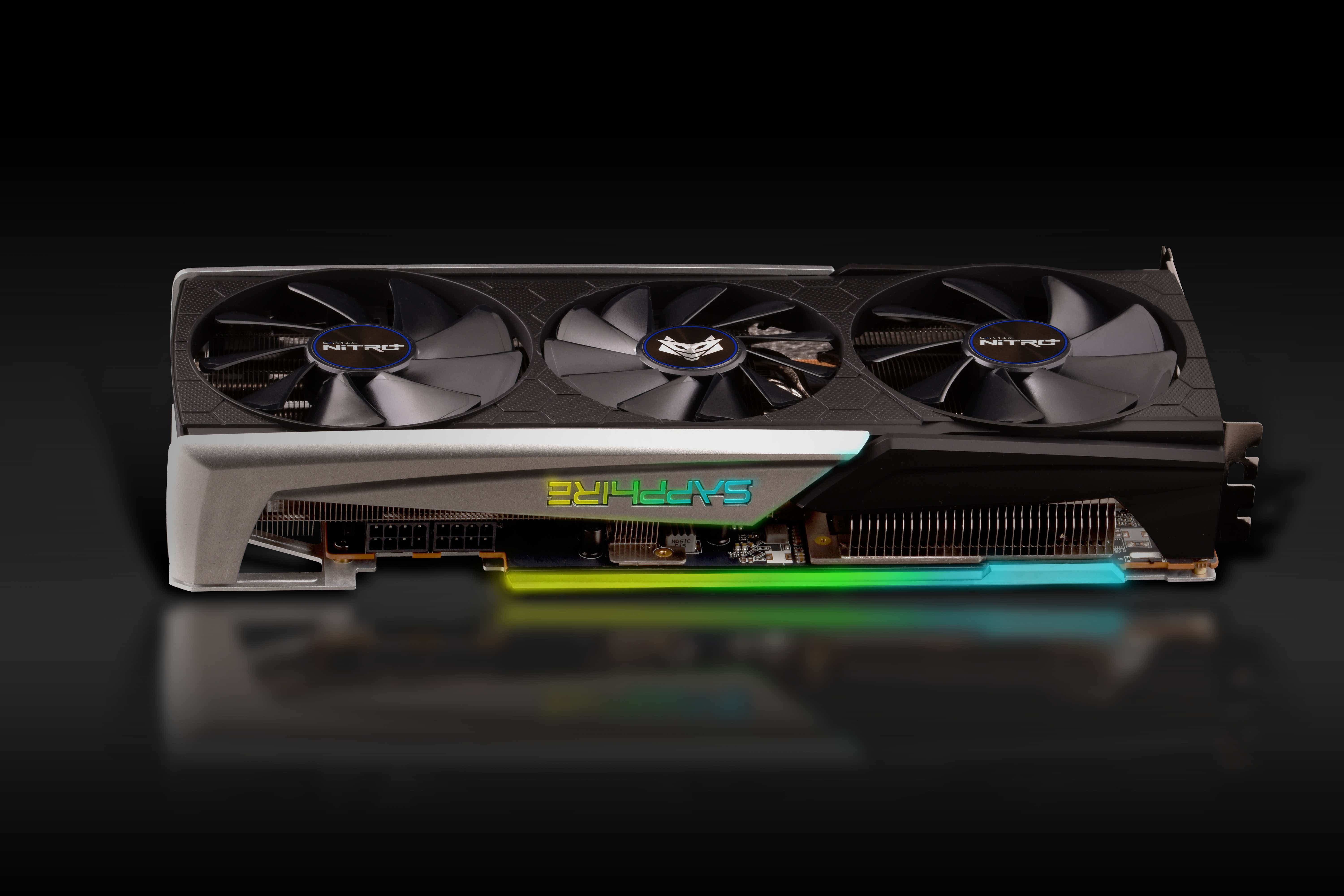It’s finally here. AMD gets to hoist the trophy in the race to the next-generation PCIe 4.0 interface for desktop PCs. By combining its superb Ryzen 3000 CPUs, the X570 motherboard chipset, a new spate of PCIe 4.0 SSDs, and either the powerful Radeon RX 5700 or budget-friendly Radeon RX 5500 XT graphics cards, consumers can now build or buy the first PCIe 4.0-based PCs.
PCIe 4.0 sounds exciting—it’s the first big change to the interface since 2010. But as always, the questions of who can get it (and who can’t), and who really needs it, are more nuanced than you’d think. Keep reading to get the all the details.
What is PCIe 4.0?
PCIe 4.0 is the next iteration of the PCIe interface. It’s used for connecting add-in cards and M.2 drives, as well as interconnecting various chips inside a PC. Compared to its predecessor PCIe 3.0, PCIe 4.0 essentially doubles the overall throughput. The chart below from PCI-SIG lays it all out nicely:
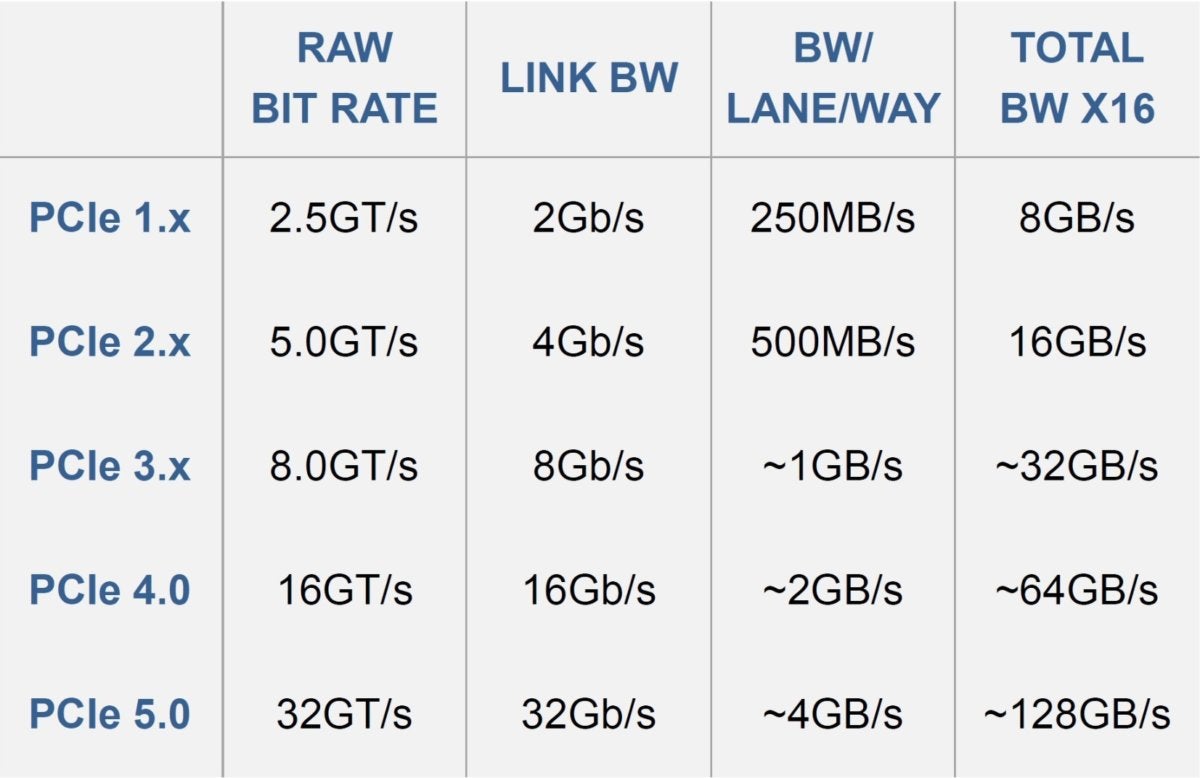 PCI SIG
PCI SIGIf that looks like a boatload of bandwidth, it is. Seizing an opportunity to troll Intel and Nvidia, AMD ran Futuremark’s unreleased PCIe feature test to show how a Ryzen 7 3800X coupled with a Radeon RX 5700 in PCIe 4.0 mode offered 69 percent more PCIe throughput performance than a Core i9-9900K and GeForce RTX 2080 Ti.
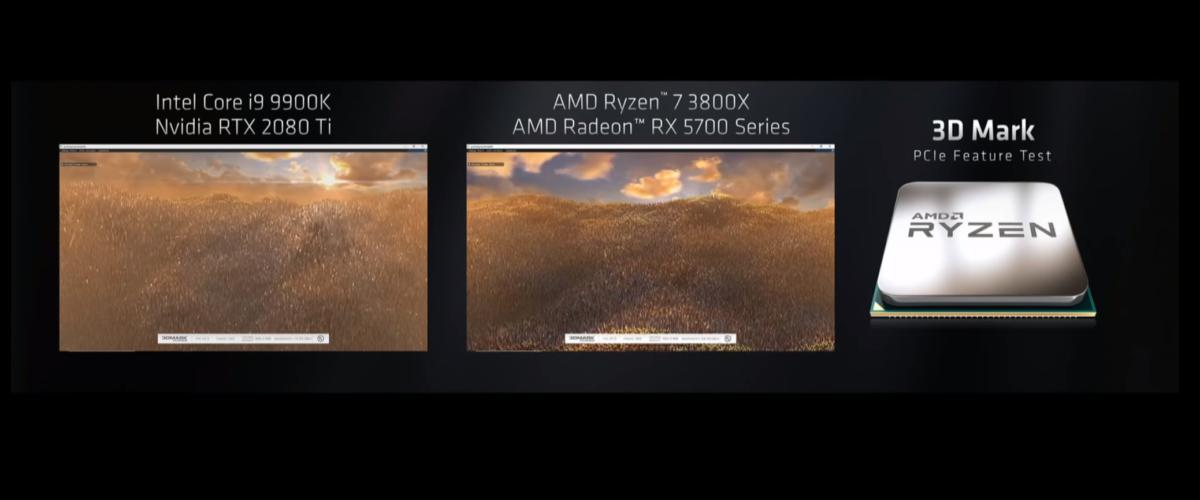 AMD
AMD
AMD’s demo featured Futuremark’s new PCIe feature test. It showed a PCIe 4.0-based Radeon RX 5700 besting a PCIe 3.0 GeForce RTX 2080 Ti in transfer performance.
PCIe 4.0: Gaming reality vs. hype
One problem with AMD’s demonstration, however, is that “69 percent” performance, while most likely real, doesn’t actually translate into more practical gaming performance today. That’s because few games ever saturate the 32GBps of data today’s x16 PCIe 3.0 slot can carry.
Alienware’s laptops actually limit the slot to x8 PCIe 3.0, siphoning off the rest to support the external graphics port. The reason? It doesn’t matter (much).
This disparity between demand and supply has been proven out many times over the years, and TechPowerUp proved it again by testing PCIe 4.0 gaming performance using the Radeon RX 5700 XT and a Ryzen 3000 GPU. “Looking at the results, we can see a whole lot of nothing,” the site says. (AMD says the Radeon RX 5700’s PCIe 4.0 support brings bigger benefits to gamers who also create content on Twitch, YouTube and the like.)
PCIe 4.0 brings other benefits too, however. AMD’s Radeon RX 5500 XT delivers killer power efficiency, surpassing rival Nvidia GPUs for the first time in years, and part of that comes from PCIe 4.0’s reduced power needs. So while the cutting-edge tech might not translate to higher in-game frame rates, it helps reduce your PC’s energy draw, which in turn helps the new-look Radeon GPUs run cooler and quieter than before.
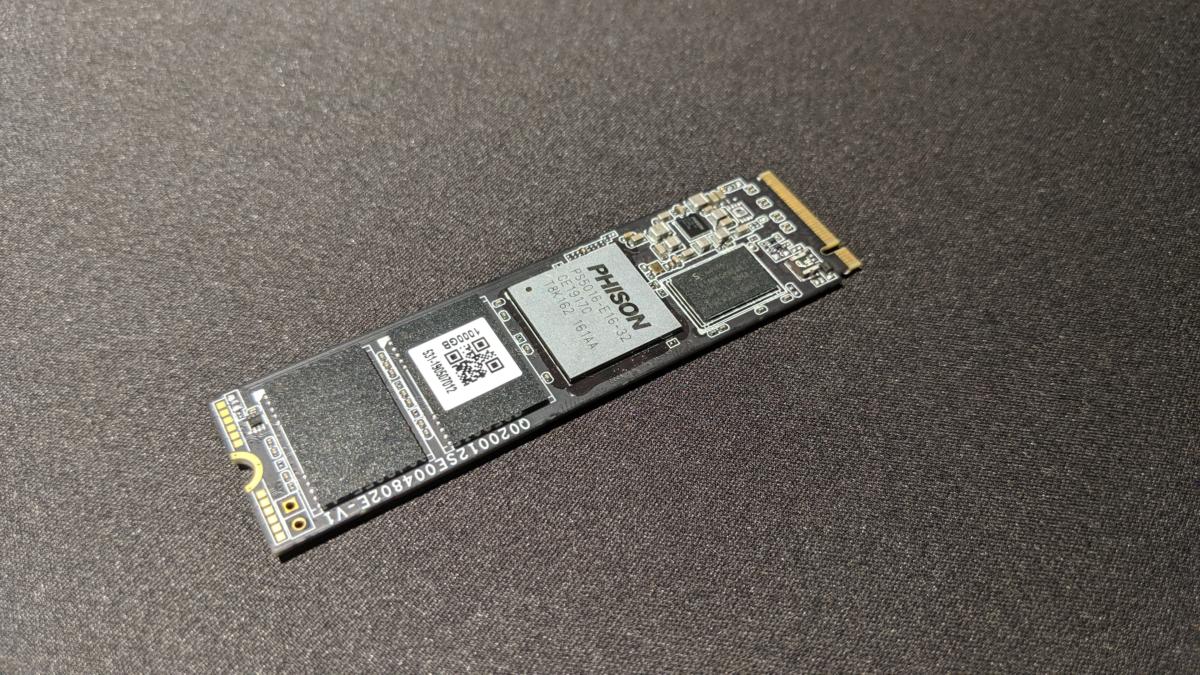 Gordon Mah Ung
Gordon Mah Ung
Gigabyte’s Phison-based M.2 PCIe 4.0 SSD supports up to 2TB of storage.
Where PCIe 4.0 matters more: Storage
PCIe promises a huge boost in other areas of the PC, though. The most obvious one is storage, where AMD also demonstrated the performance difference using SSDs.
We witnessed a single Gigabyte Aorus M.2 PCIe 4.0 SSD hitting 5GBps reads and 4.3GBps write speeds. That’s about 35 percent higher sequential performance than we’ve seen from some of the faster M.2 PCIe 3.0 SSDs. A Guru3D review of Corsair’s MP600 SSD and TechPowerUp’s review of the Gigabyte Aorus SSD mentioned above show that the drives can indeed hit blazing-fast speeds when you’re moving massive files, though some workloads deliver real-world performance on par with a high-end PCIe 3.0 NVMe SSD.
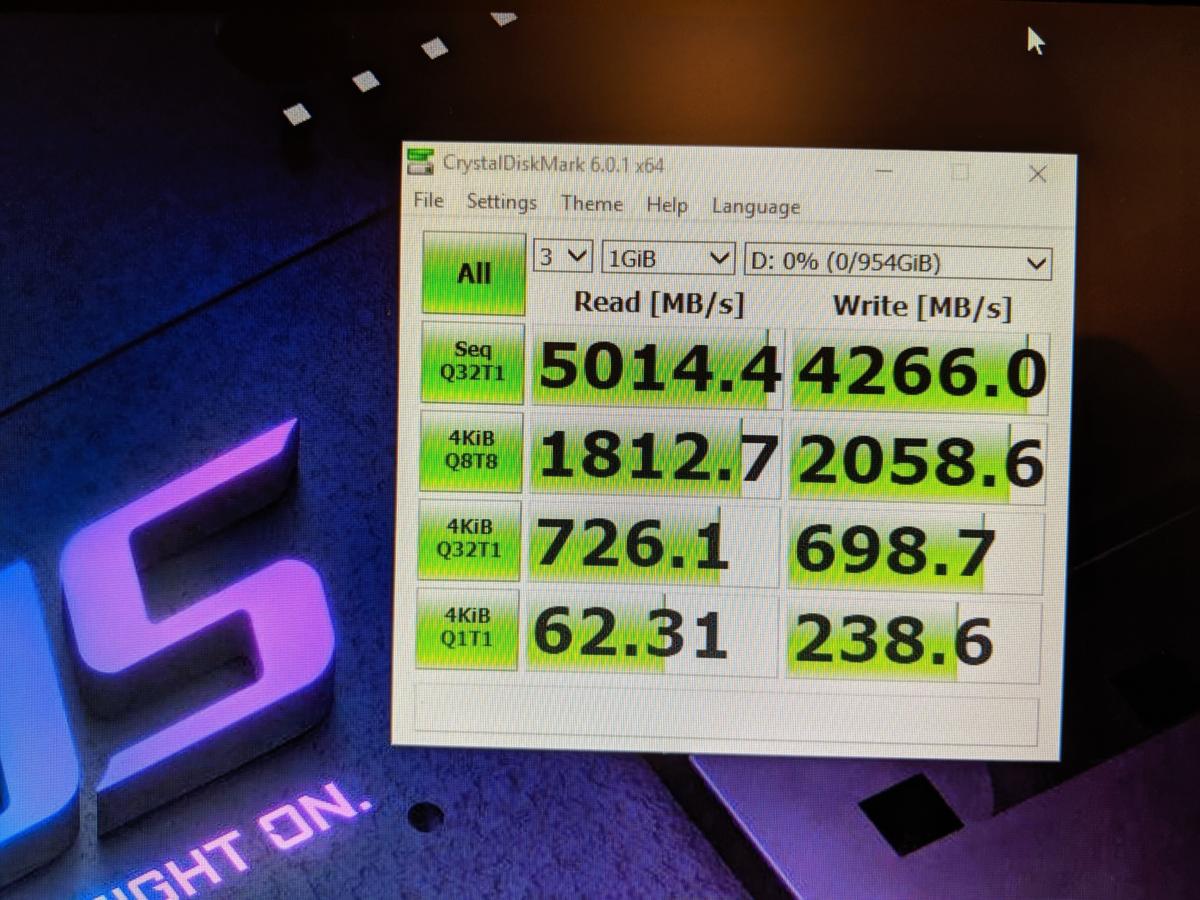 Gordon Mah Ung
Gordon Mah Ung
A Gigabyte M.2 PCIe 4.0 SSD can push 5GBps reads and 4.3GBps writes, a hefty increase over PCIe 3.0 drives.
It gets even crazier if you run them in RAID 0, which is what Gigabyte did using a PCIe 4.0 add-in card holding four 2TB PCIe 4.0 M.2 SSDs. You can see the card below with its shroud off. The card is essentially one big passive PCIe extender.
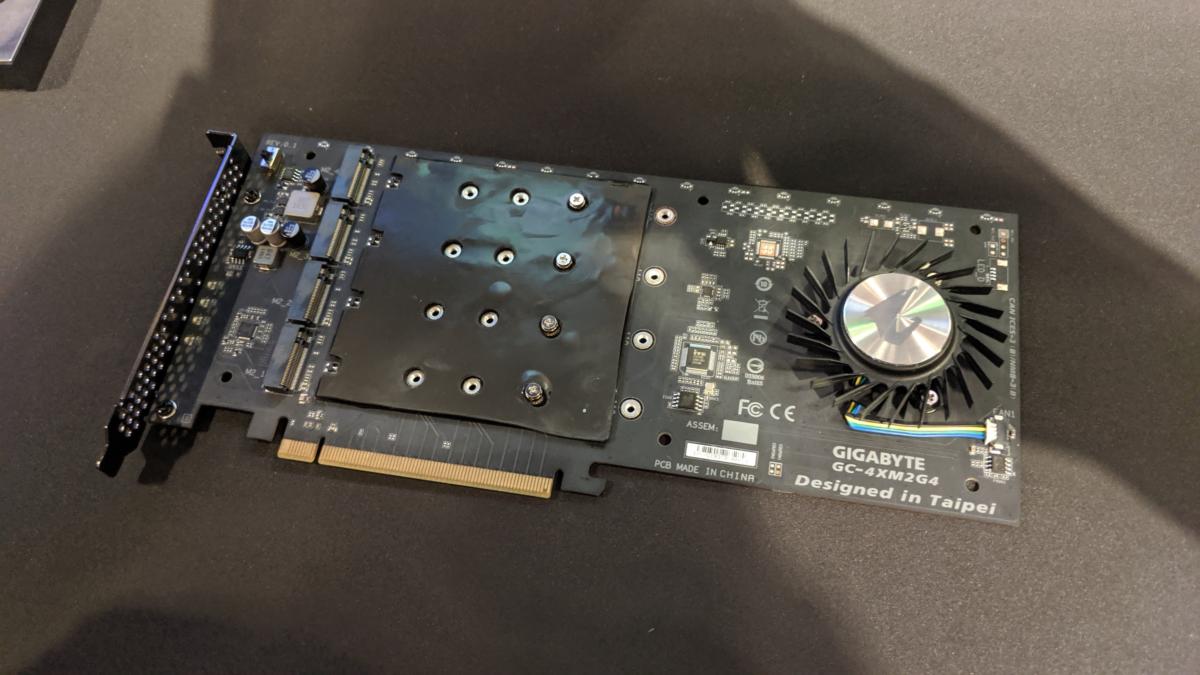 Gordon Mah Ung
Gordon Mah UngThe performance of that card is impressive, at 15.4GBps reads and 15.5GBps writes. Compare that to Intel’s VROC demo from the Computex 2017, which used eight M.2 x4 PCIe 3.0 drives in RAID 0 on an X299 motherboard. That hit only 11.6GBps.
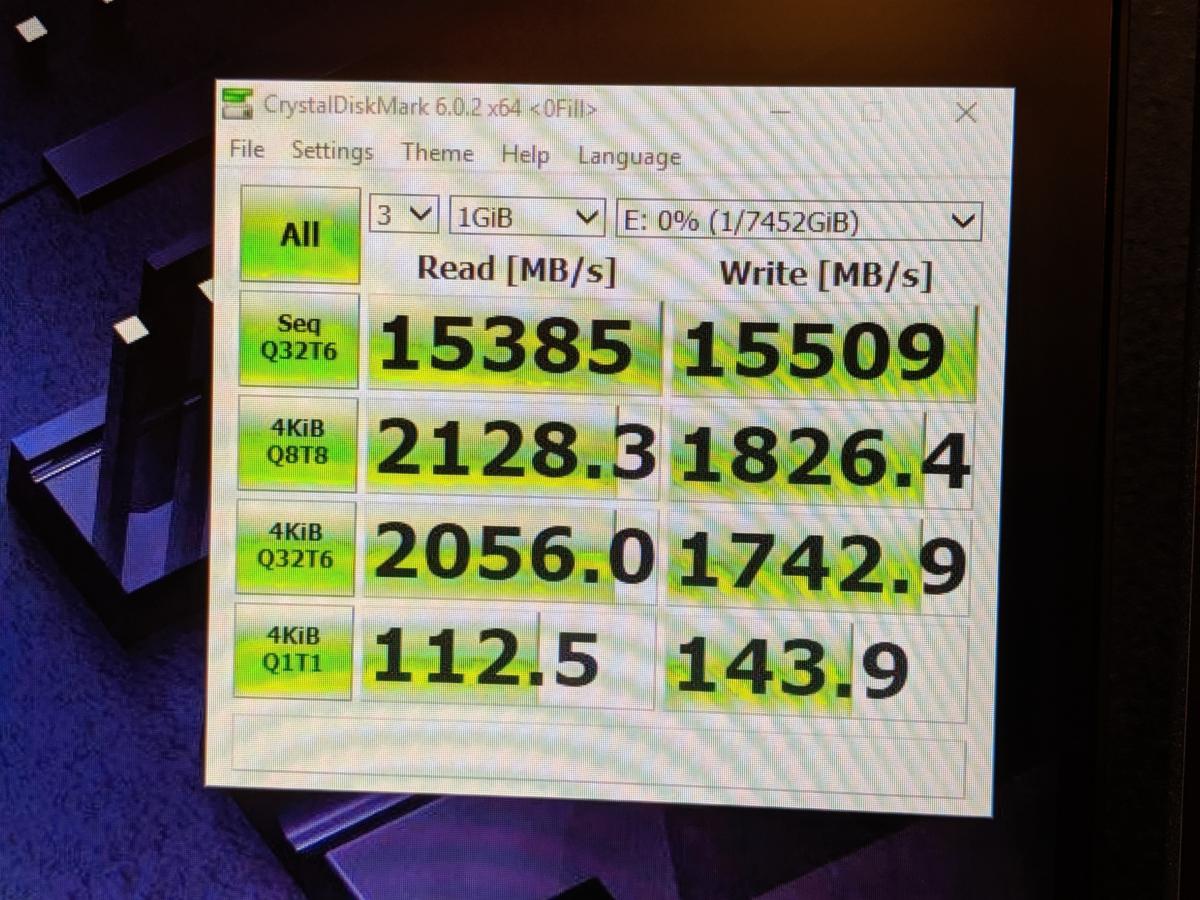 Gordon Mah Ung
Gordon Mah Ung
With four M.2 PCIe 4.0 drives in RAID 0, the AMD-based Gigabyte Aorus M.2 RAID card can push 15GB each way.
The PCIe 4.0 catch: SSD vs. GPU
While seeing 15.4GBps of drive speed is cool, one thing you should keep in mind is that it will involve a small compromise. Note that the card above is a x16 PCIe 4.0 card. Because Ryzen 3000 “only” can support a single-slot x16 PCIe 4.0, you have to choose whether to put your x16 PCIe 4.0 graphics card or your x16 PCIe 4.0 SSD in that slot.
Maybe you’ve seen marketing and stories that claim the Ryzen 3000 has 40 PCIe lanes, so “there’s plenty.” It doesn’t quite work out that way.
Unlike a Ryzen Threadripper, which has 64 PCIe lanes (Gen 3.0) in the CPU, the Ryzen 3000’s 40 lanes are platform lanes. That means there are 24 in the CPU, with 16 reserved for an add-in card (typically the GPU), and another four for an M.2 or other device. The last four PCIe lanes are used to connect the CPU to the chipset. The chipset itself contains another 16 PCIe 4.0 lanes.
Obviously, you can’t squeeze the bandwidth from 16 PCIe 4.0 lanes through four PCIe 4.0 lanes to the CPU, so any 16-lane device running through the chipset’s southbridge would be limited. Intel has done the same for its small-socket Core chips.
There is an actual use for these additional PCIe lanes in the southbridge, as they allow motherboard makers to connect multiple M.2 SSD slots, PCIe, SATA, and other ports and devices without having to turn things off—something that was done in the past when they ran out of PCIe bandwidth.
Although we don’t know the final configurations of how x570 can be split out, early indications suggest the southbridge can be configured with a single x4 and three x1 slots at PCIe 4.0, with the rest being broken out among other hardware in the motherboard.
While you might recoil at the idea of putting your x16 GPU into a x4 slot shared with other devices, you’ll likely take a small and relatively painless hit, given that it’s still the equal of a x8 PCIe 3.0 connection.
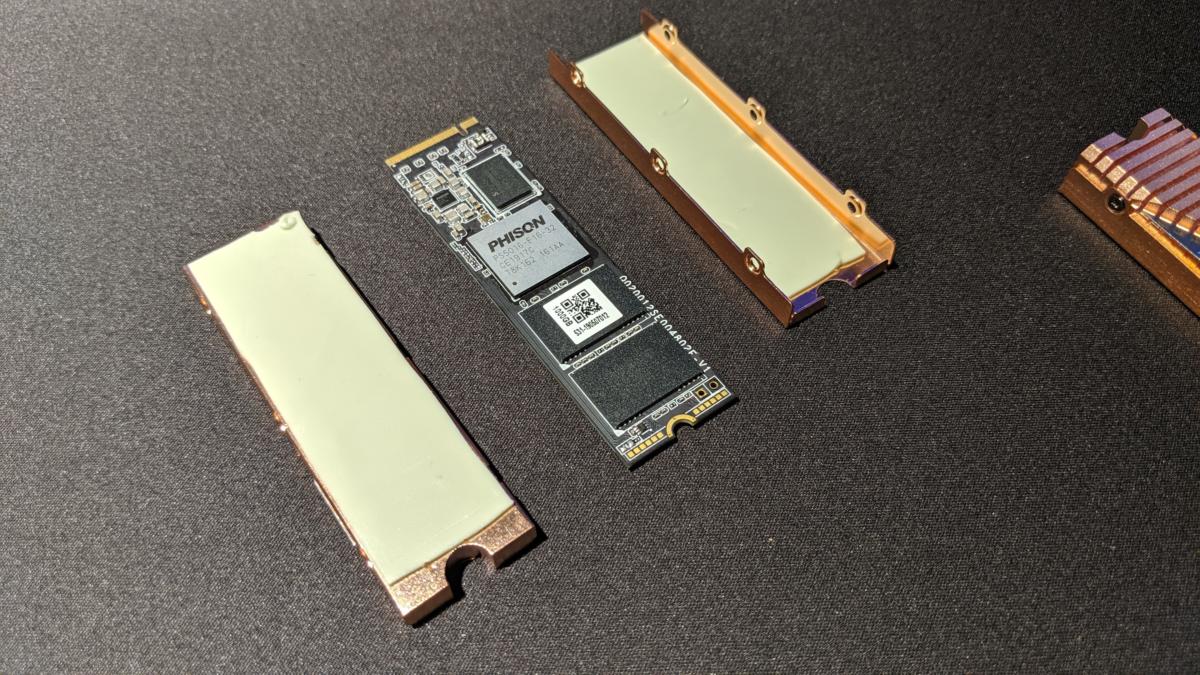 Gordon Mah Ung
Gordon Mah Ung
The Gigabyte Aorus PCIe 4.0 SSD features beefy copper heat sinks, and it needs them.
PCIe 4.0 will run hot
Heat will be a challenge for PCIe 4.0 devices. With the move from PCIe 2.0 to PCIe 3.0, a considerable amount of performance was squeezed out of it by increasing the efficiency of the protocol. With PCIe 3.0 to PCIe 4.0, most of the performance comes from increased clock rate, which brings more heat—so much that the fancy heat sinks aren’t just fashion statements, but necessity to maintain performance.
The chipset to supply the PCIe 4.0 is hotter, too. Vendors tell us it’ll generate anywhere from 11 watts (at idle, most likely) to 16 watts of heat. It’s hot enough that just about every PCIe 4.0 motherboard we’ve seen featured a fan for the chipset. Fans on southbridge chips were actually fairly common just 10 years ago as well.
This is a consideration but likely not a concern. Fans do add to system noise, but if done properly, you’ll be hard-pressed to hear it.
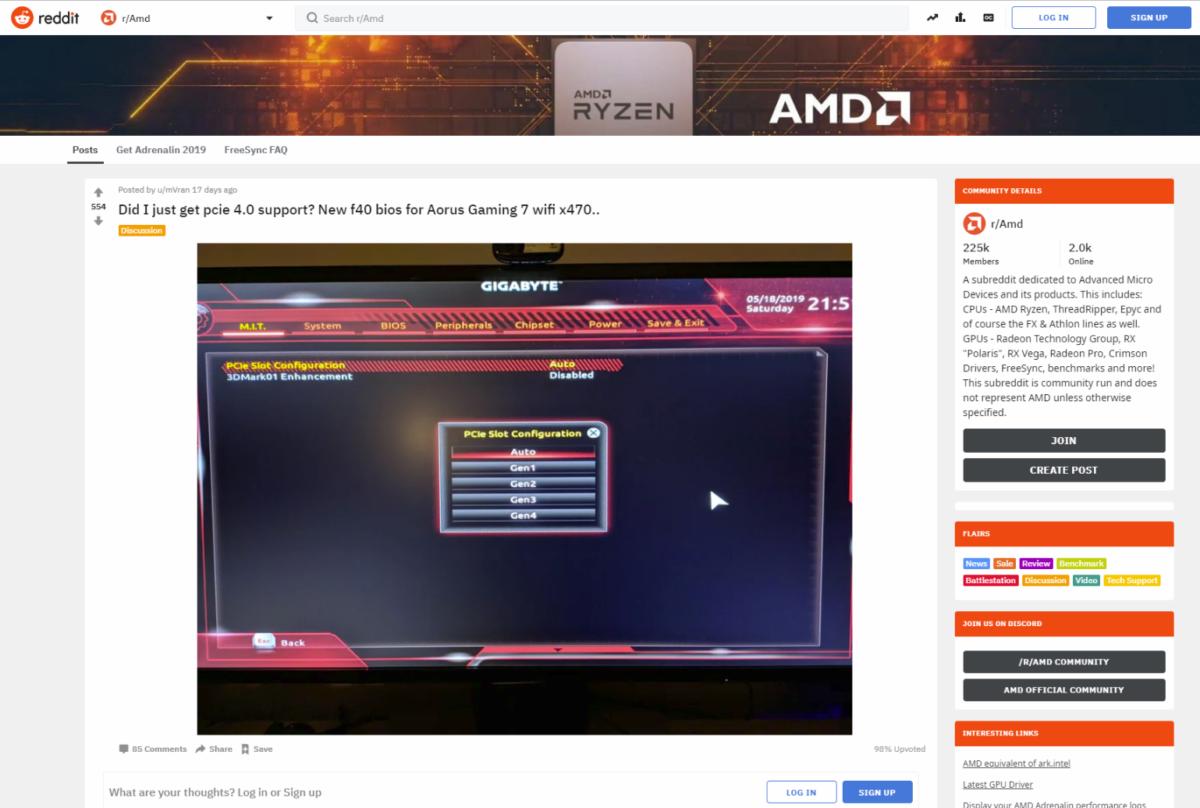 Reddit
Reddit
One Reddit user had high hopes after a Gigabyte BIOS/UEFI update seemed to enable PCIe 4.0 support on older AMD motherboards.
PCIe 4.0 is not backward-compatible
Initially, AMD fans were juiced to hear that PCIe 4.0 compatibility could be done on older x470 motherboards. In fact, Gigabyte released a UEFI update that appeared to show an older x470 going from PCIe 3.0 to PCIe 4.0.
AMD officially dumped a bucket of cold water on that idea. “PCIe 4.0 will not be supported on motherboards released prior to the X570, so 400-series and 300-series will have PCIe 3.0 support,” an AMD spokesperson told PCWorld. “These boards were designed and built prior to the capability to ensure PCIe 4.0 functionality, and we cannot adequately ensure a performant, stable user experience. We do not believe this is an acceptable experience for our consumers.”
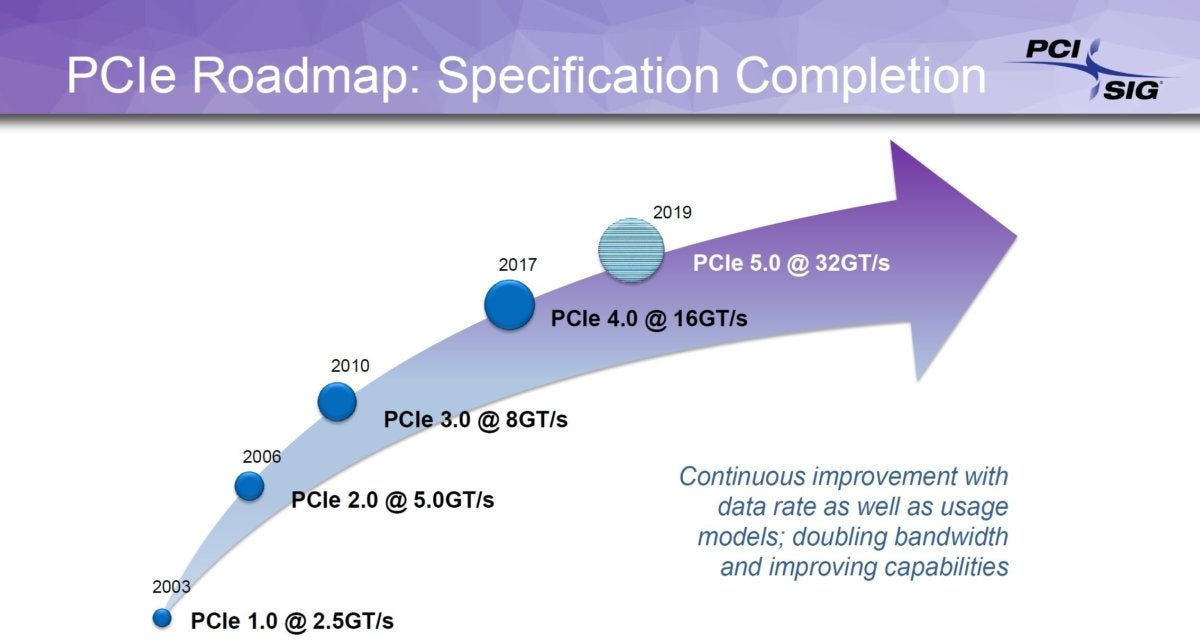 PCI SIG
PCI SIG
It’s taken almost two years to see our first PCIe 4.0 hardware. You’ll likely see a similar time frame for PCIe 5.0.
What about PCIe 5.0?
Confusing the news around PCIe 4.0 was the seemingly simultaneous release of the PCIe 5.0 spec, finalized by the PCI SIG. The confusion is somewhat false, because announcing a spec doesn’t mean the hardware is available. The PCIe 4.0 spec was finalized in 2017, and now, about two years later, we have the first PCIe 4.0 hardware. We’re likely to see the same lag between final specifications and released hardware for PCIe 5.0.
Intel doesn’t have PCIe 4.0 yet
The only thing that could usher in PCIe 5.0 faster than expected is if Intel or Nvidia decided to accelerate its adoption to throw some mud on AMD. Officially, however, Intel hasn’t even announced any plans to implement PCIe 4.0, let alone PCIe 5.0. Its current products remain rooted in PCIe 3.0.
PCIe 4.0 will quietly bring more speed
The move to PCIe 4.0 is, overall a good move for the PC, removing a bottleneck for ever-faster components down the road. Just remember that these interface ships are hard to turn. The PCIe 4.0 interface, and parts that can take advantage of it, are just beginning to come out.
So while we wouldn’t say no to PCIe 4.0 in a new system or build—we’d also have to seriously weigh whether it makes sense to pay extra cash for the feature. For example, does it make sense to pay $250 for a PCIe 4.0-based X570 motherboard, or save $100 and buy a PCIe 3.0-based X470 motherboard instead?
Ultimately that’s the user’s choice to make. But now, we’ve finally got options.
Editor’s note: This article originally published on June 13, 2019, but was updated by Brad Chacos to add review links and additional information throughout after the launch of AMD’s PCIe 4.0-compatible hardware.


